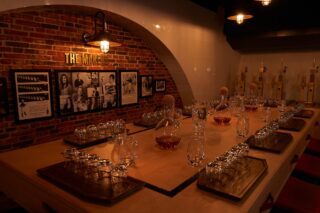This website uses cookies so that we can provide you with the best user experience possible. Cookie information is stored in your browser and performs functions such as recognising you when you return to our website and helping our team to understand which sections of the website you find most interesting and useful.
Loch Lomond distillery unveils its highest age statement whisky to date
By Tessa Crowley | 25 July 2024 | Food & Drink, Indulge
As the distillery releases its oldest expression to date, we sat down with Master Blender Michael Henry to hear more about the journey to 50 years, and what makes Loch Lomond whisky so unique.
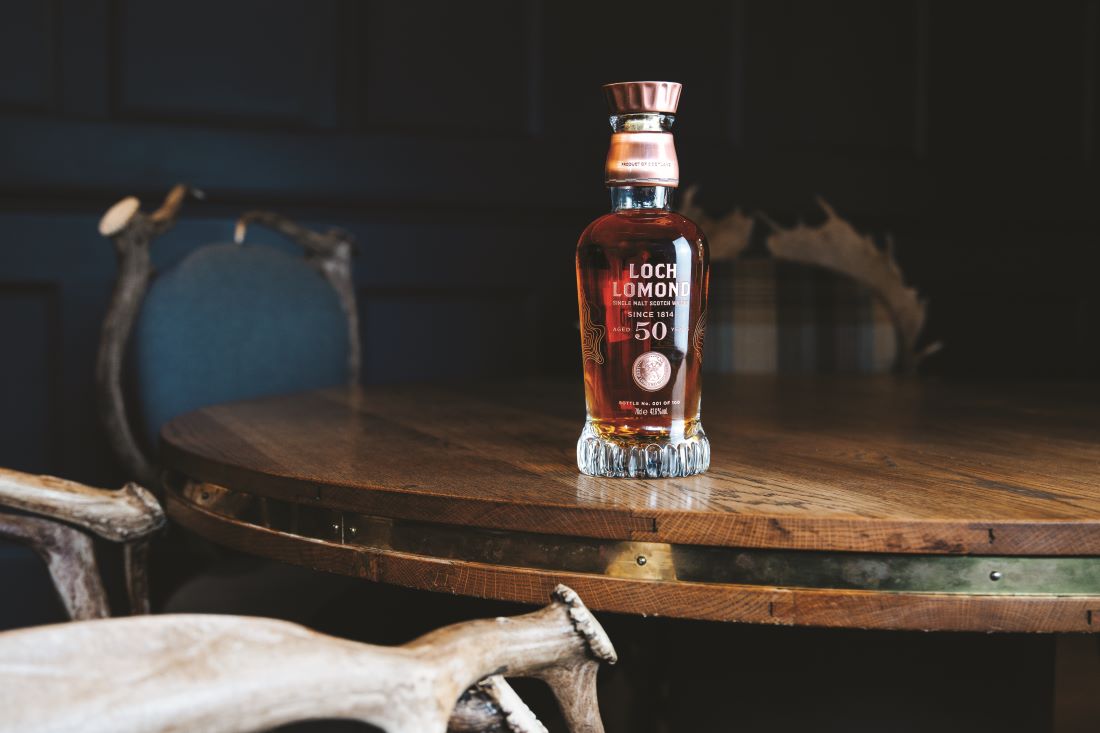 Any self-respecting Scotch whisky fan will be able to tell you a fact or two about what goes into this unique treasured spirit. At its heart? Simple, distinctive ingredients – water, yeast, and grain – double distilled in an elegant, swan-neck spirit still, before biding its time for three years and a day to become the Scotch single malt we know and cherish.
Any self-respecting Scotch whisky fan will be able to tell you a fact or two about what goes into this unique treasured spirit. At its heart? Simple, distinctive ingredients – water, yeast, and grain – double distilled in an elegant, swan-neck spirit still, before biding its time for three years and a day to become the Scotch single malt we know and cherish.
Yet as with most things in whisky, there’s always a challenger to the status quo. On the shores of Loch Lomond sits a distillery quietly subverting one of these core tenants. Founded as a sister distillery to the now silent Lowland Littlemill Distillery, Loch Lomond is unique in championing straight necked stills, essential in its distillation process has since its inception in 1814. A couple of moves and many years later, the distillery settled in its current location on Loch Lomond’s southern shore, in 1966. Welcoming a pair of swan neck stills in 1999, the range of spirit stills allows for an incredibly diverse array of flavours, and requires exceptional craftmanship to coax each cask of spirit to fulfil its ultimate potential. 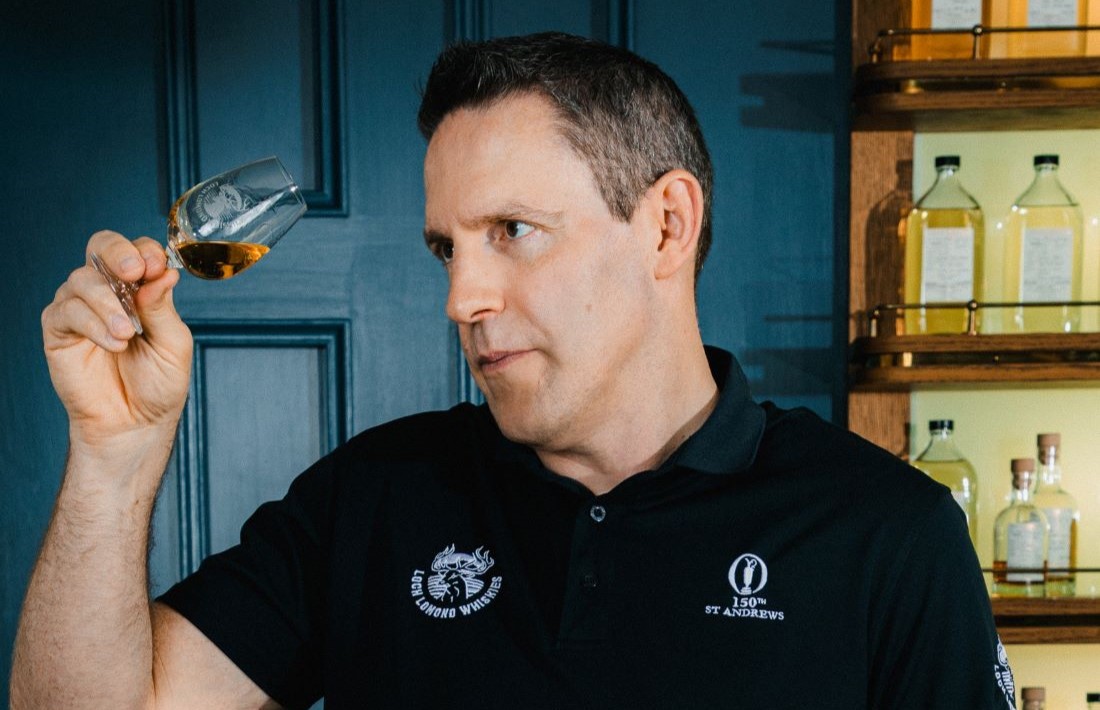 Coupled with one of only four in-house cooperages in Scotland, it’s fair to say the unique set up gives Loch Lomond’s Master Blender, Michael Henry, an awful lot to play with. With a deep technical understanding of flavour generated from his years in brewing, Michael deftly handles these valuable, aged spirits, making daily decisions which change the course of the liquid – amplifying the distillery’s signature flavours of orchard fruit, honey, and soft smoke, or adding additional complexity and layers through cask choice and ageing. “By having our own cooperage, we get very tight control over the wood influence into the spirit. We always maintain a background honey character as part of our signature style” he explains. The level of control is unparalleled.
Coupled with one of only four in-house cooperages in Scotland, it’s fair to say the unique set up gives Loch Lomond’s Master Blender, Michael Henry, an awful lot to play with. With a deep technical understanding of flavour generated from his years in brewing, Michael deftly handles these valuable, aged spirits, making daily decisions which change the course of the liquid – amplifying the distillery’s signature flavours of orchard fruit, honey, and soft smoke, or adding additional complexity and layers through cask choice and ageing. “By having our own cooperage, we get very tight control over the wood influence into the spirit. We always maintain a background honey character as part of our signature style” he explains. The level of control is unparalleled.
As the distillery launches its oldest expression to date, a rare 50 year old, we chatted to Michael and his team about what characterises a Loch Lomond whisky. Those straight neck pot stills crop up time and again. Designed by an American scientist, the plan was always to create a triple distilled style using only double distillation. “When we talk about Loch Lomond signature distillery character we’re really looking at fruit, honey sweetness and soft smoke. The fruit comes from the straight neck pot stills. They separate out the heavier flavours and select fruitier flavours to pass into the new make spirit”. The resulting liquid is light and smooth.
Another core character of Loch Lomond’s style offers that unmistakable soft smoke. When using heavy peated malted barley, the stills once again have a part to play. “When we distill peat through them, we see that selectiveness coming in, which is really down to the stills being able to separate out lighter and heavier flavours. It selects out medicinal phenol character and selects in more smoky spicy peat character”.
Related story: Discover Brora as the famed distillery’s first Scotch whisky in 40 years come of age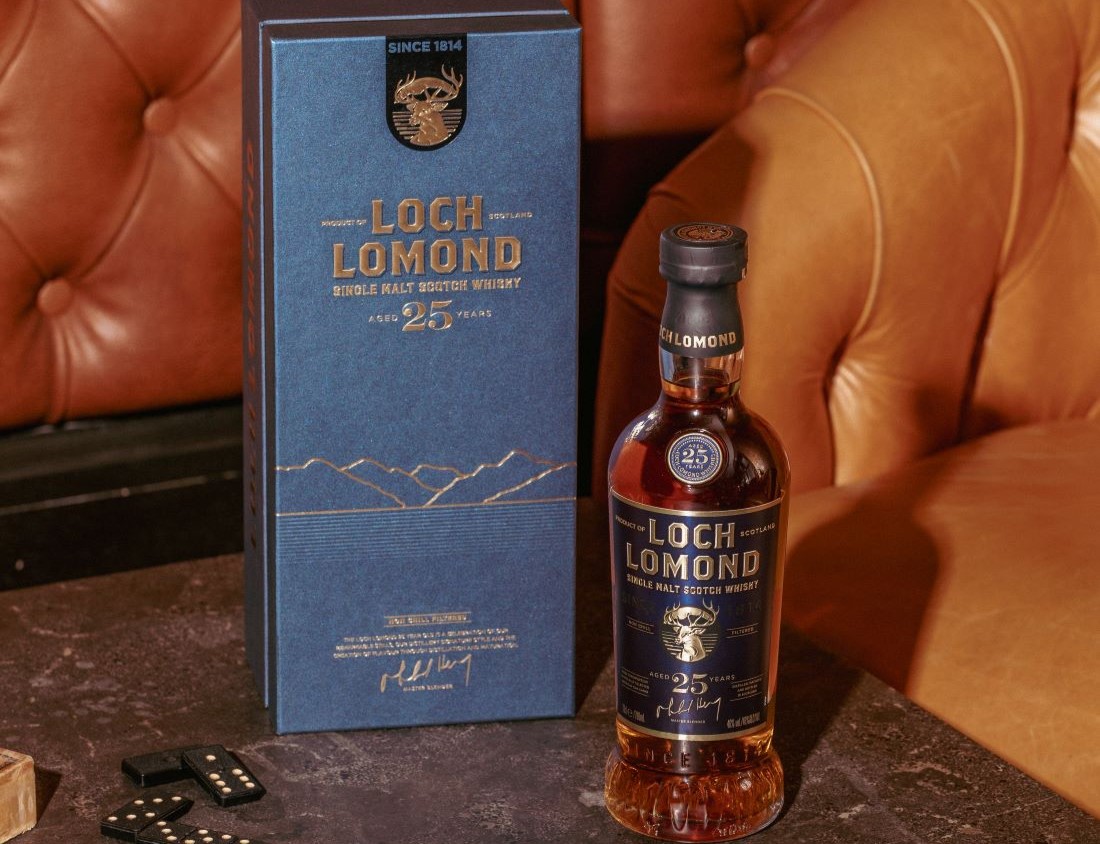 So then, sitting quietly in casks for over 50 years, how does the latest release in the Loch Lomond collection embody these attributes? The new bottling joins a 25 year, released this spring, as one of three expressions distilled wholly in those revered straight neck stills.
So then, sitting quietly in casks for over 50 years, how does the latest release in the Loch Lomond collection embody these attributes? The new bottling joins a 25 year, released this spring, as one of three expressions distilled wholly in those revered straight neck stills.
Michael explains “We’ve used two different expressions for the Loch Lomond 25 Year Old. Both come from straight neck pot stills, both are collected at a high spirit collection strength. The difference is that one uses 100% unpeated malted barley, and the other uses 100% heavy peated malted barley. I combined the two styles of spirit in a ratio that allows the big fruity character to come through. There’s a background sweetness there and…a wisp of smoke coming through in the finish”.
At double its age, its perhaps no surprise to hear the 50 Year has had a more convoluted voyage from distillation to bottle. Michael took the decision back in 2011 to recask them into first fill bourbon, before a further and final recasking in 2017 into Oloroso sherry casks. “They had a very strong distillery character and I wanted to add more of that sweetness to the spirit” Michael explains. And the choice of Oloroso? “To give some complexity to the fruit character that was there, some floral notes and a little bit of spice”. 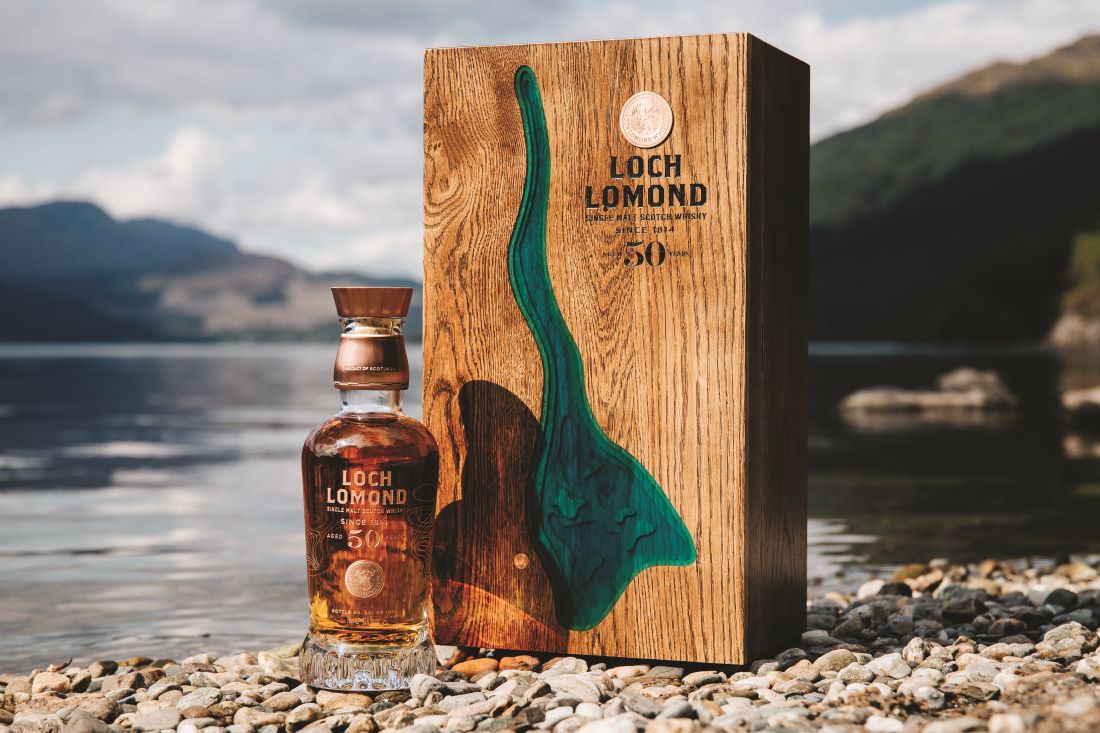 For Michael, the most exciting thing the 50 Year Old offers which “we can’t replicate, is the effect of time on spirit”. For him, this new expression from the distillery is a perfect expression of craft and patience. “The flavours in the spirit interact with each other very slowly so its only high age expression that you really see that effect coming through. [For Loch Lomond’s signature style] it’s the shift from orchard fruit to more tropical, jammy fruit that we see in the 50 Year Old. We’re getting much more mango, pineapple type notes. That citrus has moved to a marmalade character”.
For Michael, the most exciting thing the 50 Year Old offers which “we can’t replicate, is the effect of time on spirit”. For him, this new expression from the distillery is a perfect expression of craft and patience. “The flavours in the spirit interact with each other very slowly so its only high age expression that you really see that effect coming through. [For Loch Lomond’s signature style] it’s the shift from orchard fruit to more tropical, jammy fruit that we see in the 50 Year Old. We’re getting much more mango, pineapple type notes. That citrus has moved to a marmalade character”.
Nick Bradley, Global Prestige Manager for Loch Lomond Group, adds “This is a really special moment for us. This dram is one of the oldest reserves we have left to offer and this is as far back in the distillery’s history we can take you to. To put that into perspective, the last precious casks we have aren’t this old”. “The interventions and the layers of flavours that has created, through different hands and people all looking to the future and innovating and all the way through to Michael who has put the final touches on this… It’s gone through a remarkable journey”.






